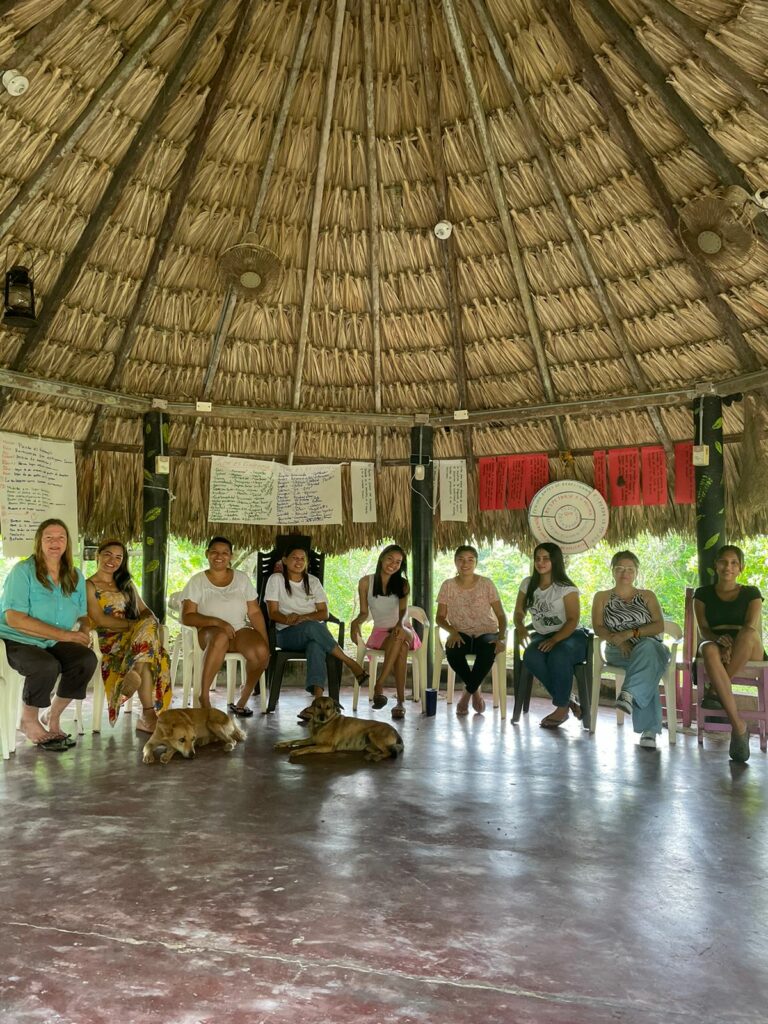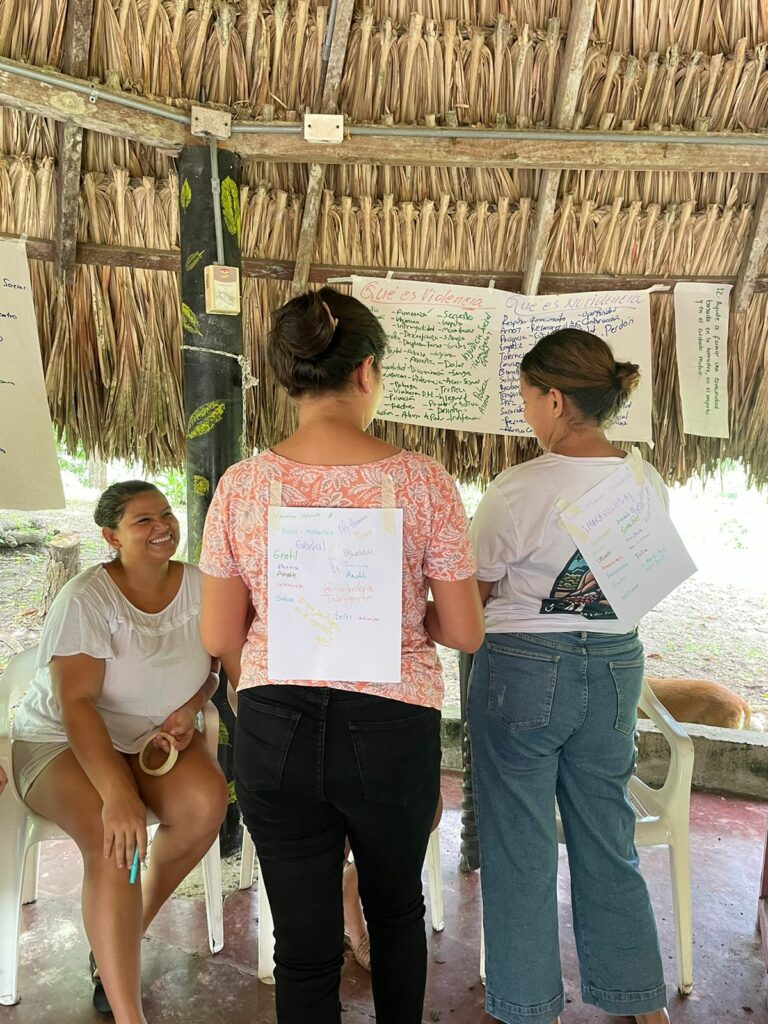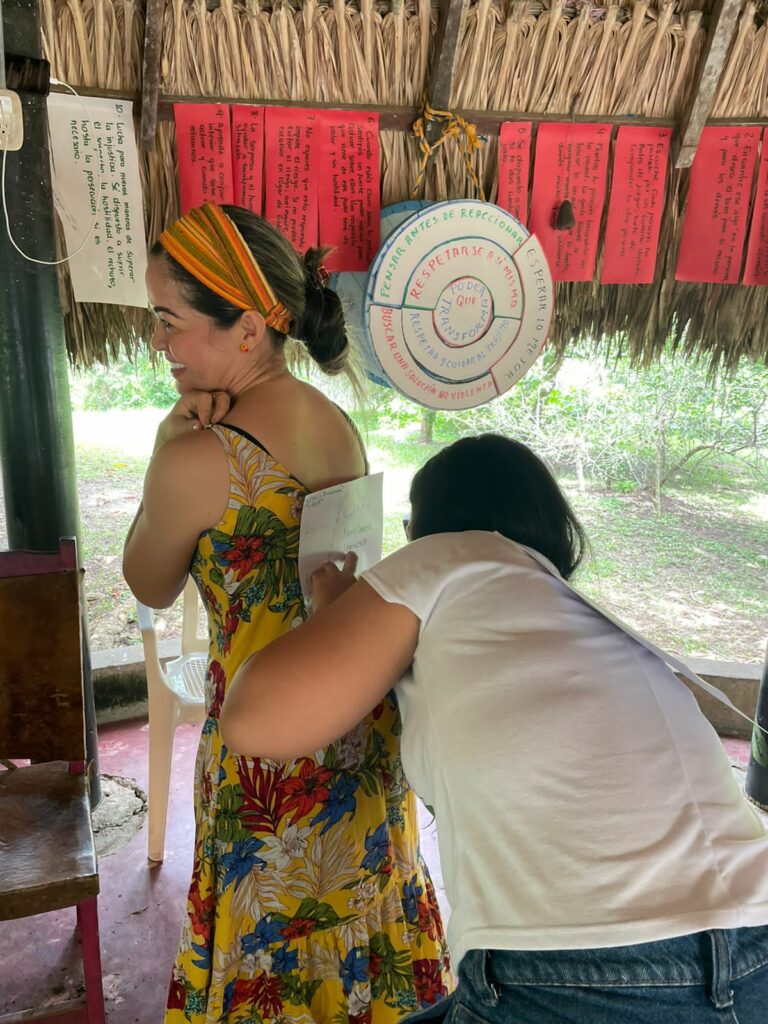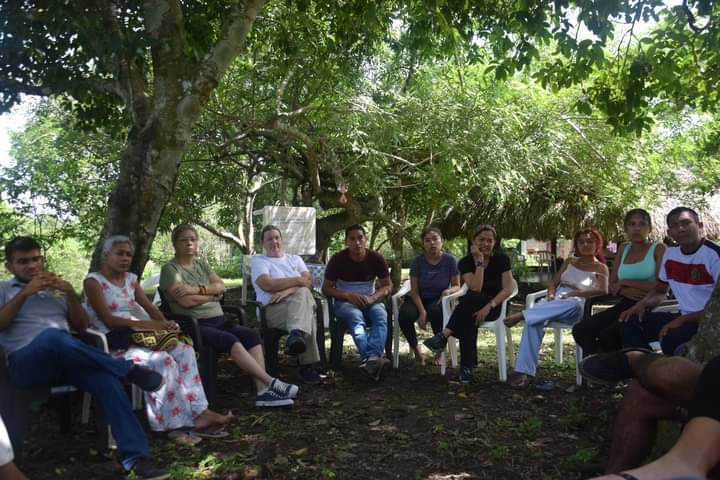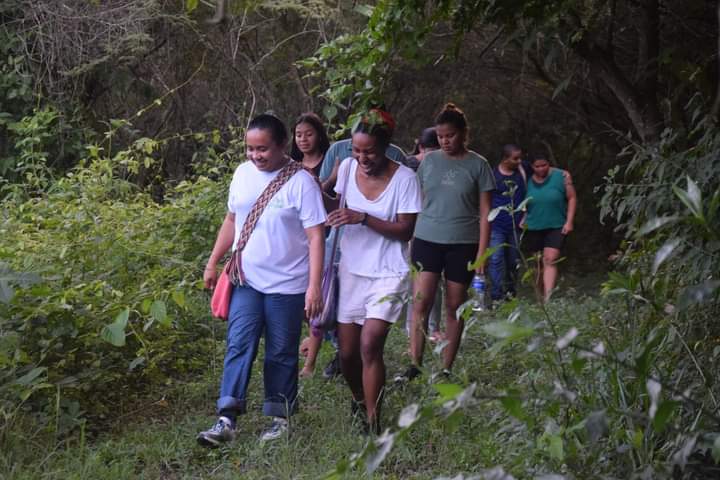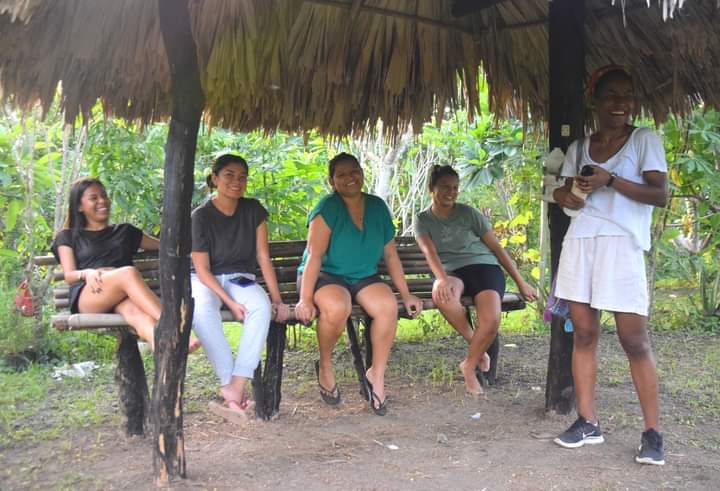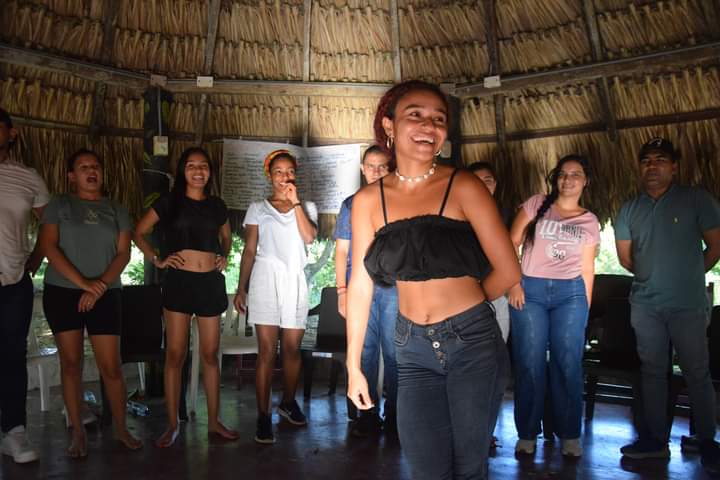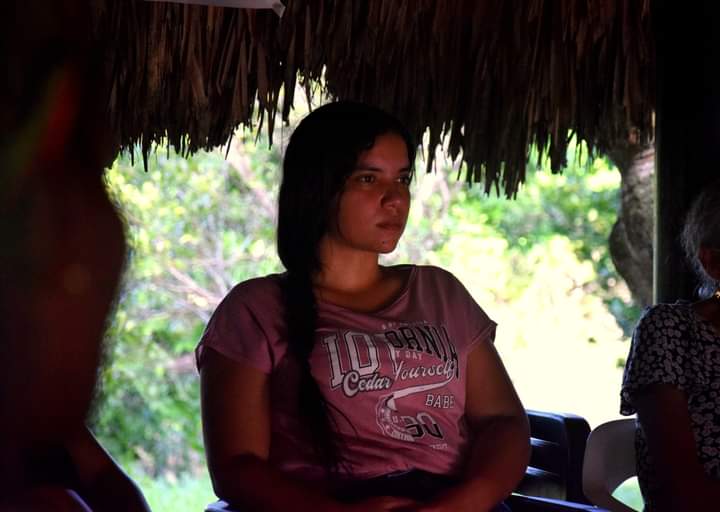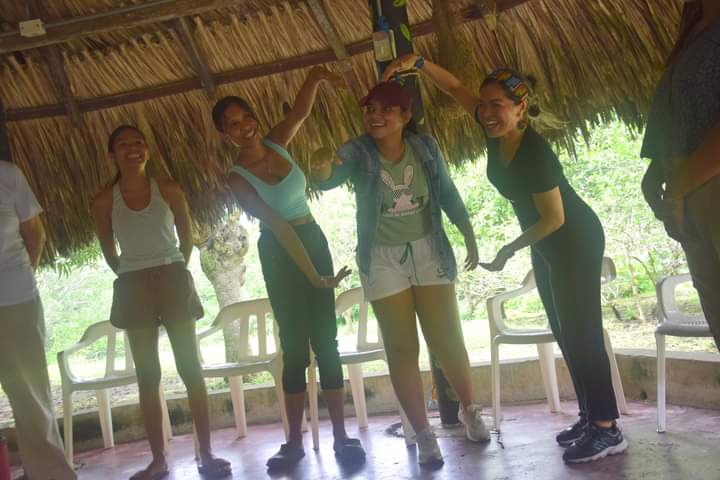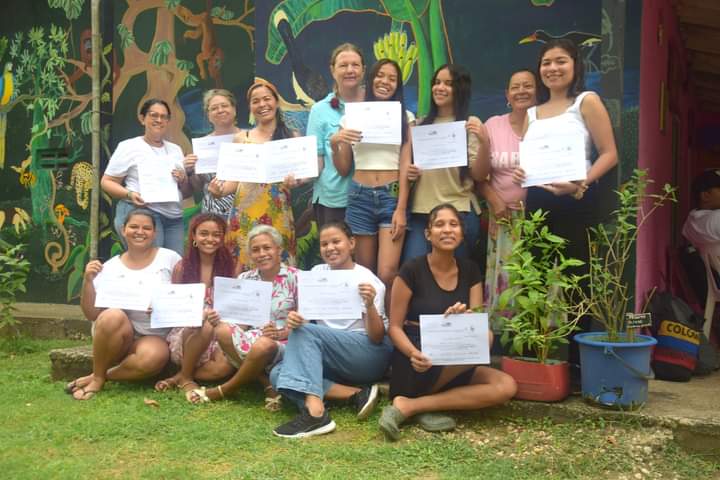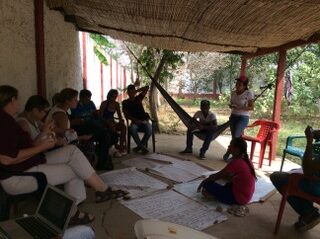What does it mean to empower girls in post-civil war Colombia? With start-up money from PaxWorks, Yenny Ochoa and María Alejandra “Margie” Yepes aimed for nothing short of cultural transformation. After the violence of previous decades, mentoring young leaders of their girls’ group in problem solving, their right to their own body, conflict resolution, financial literacy and reconnecting with community traditions has created a protected place for personal and communal metamorphosis.
Colombia and the Montes de María Region
Yenny and Margie work for the Colombian non-profit Sembrandopaz to find creative ways to initiate change for young women and girls in areas where trust has eroded and violence is prevalent due to the decades-long armed conflict. Sembrandopaz works primarily in the mountainous Montes de María region in northern Colombia, finding ways to return human dignity to Montes de María through a pedagogy focused on non-violence, interconnectedness, solidarity, and respect for the environment.
Montes de María was 8th on the list of 16 regions most affected by the armed conflict, as affirmed by the internationally recognized peace accords signed in 2016. The years of violence have affected the family unit as well as the society at large. Although data are scarce, stories and evidence of sexual abuse and corporal punishment are prevalent. Not to mention, land is largely owned by men. Owning land provides security, without which women often cannot escape violent or abusive households. When men are the de facto heads of family and landowners, girls are not taught how to manage their own finances. Yenny and Margie have used the Sembrandopaz philosophy of peace and dialog in mentoring their girls’ groups to empower them by learning to analyze the problems in their neighborhoods and propose solutions and through financial literacy.
The Formation of ‘Girls United for a Better Future’ and ‘Girls to the Rescue’
In February 2023, with a $400 USD donation from PaxWorks, Yenny and Margie convened girls between the ages of 5 and 13 from their neighborhoods in El Carmen de Bolívar. The girls collectively chose the name Girls United for a Better Future (Chicas Unidas por un Buen Futuro). While Margie became the chief mentor for the 12 Girls United girls, Yenny formed a second group of 11 that named itself Girls to the Rescue (Niñas al Rescate).
The groups organized and carried out a project addressing an urgent need in their community. Yenny and Margie explained the process of analyzing the situation in their neighborhoods and brainstorming different solutions. The girls took it a step farther and decided to formalize their groups to create a more permanent structure. They created a board of directors by electing a president, a vice president, and a treasurer for each group.
After the elections, the newly elected president of Girls United for a Better Future, age 7, guided discussion. The 12 girls of the Girls United assembly recognized how technology had become de facto, limiting access to traditional games and outdoor recreation. They learned the games and budgeted to buy invitations, prizes, and other materials to play. Only once everything was organized did they invite boys to accompany them to carry out their plan.
When they began the project, the girls were invited to speak about their project to a group at their school. They were so quiet that the microphone could not pick up their voices. The girls got another chance once the project was finished. Explaining the games to their schoolmates, the girls’ voices were loud and clear.
To Yenny and Margie, this difference was a nearly complete about-face. Having spaces for just girls has promoted open dialog on topics they care about and relate to. When the meetings began, the girls would use violent and negative language. They referred to themselves and their ideas as “Silly” and “Clumsy,” and would say to each other “you don’t know how to do anything.” The goal of the group is not to instruct, but to open dialog. So, Yenny and Margie asked how these words made the girls feel and set the example that they preferred using words of respect and kindness. The girls soon reached the same conclusion.
This dialog does not happen in a vacuum. As the mentors saw their girls gain confidence, they also heard back from the community. In school, the girls were asking unexpected questions. They all went to the same school and the support of the group had created strong friendships. In group, they talked about feeling confident expressing their opinions in class without feeling mocked. Through friendship, they could develop strategies on how to cope with sadness and with how they felt in their families and in school.
Developing the Program and Addressing Conflict
After the success of their first attempt and the end of the project, Yenny and Margie looked for more ways to fund the project while meeting every few weeks to check in and continue the mentor relationship they had established. They applied for a grant through the philanthropic organization run by Colombia pop singer Juanes, called Fundación Mi Sangré.
By this time, word had spread and, with it, interest. Girls United, once 12 girls, grew to 17. A few girls from another school introduced themselves at the next meeting. The original girls saw these newcomers as an incursion. Tensions rose over the next few weeks culminating when one of the newcomers hit another girl.
Yenny credits the reaction to the strife in the community and in the girl’s family. Many girls live in unstable situations and the girls likely copied behavior they saw from adults. For example, during an activity recently, the girls were drawing pictures and writing about what they had learned in the group. One student began to draw cat ears with a unicorn horn. When time was up, there were four unicorn cats. The girls are receptive to any and all information, both as it relates to drawing and to violent behavior.
But in this attentiveness, Yenny and Margie saw another opportunity. They are both 27 and graduated at the same time from the Corporación Universitaria del Caribe (CECAR) in Sincelejo with masters’ in social work. Margie remembers going back to her notes for a class she took on conflict resolution. As mentors, they sat the girls down and addressed the problems head-on. “It was a lot of dialog. From fights to discussions,” recalls Margie. Being able to share their life experiences gave the mentors a sense of duty. And it worked. In an all-girl space, the girls’ affinity for learning lent strength to discussions about how to address tension with love, respect, understanding, and teamwork.
These students do not always have an adult they can lean on or someone they can ask complex, personal, or taboo questions. Other lessons have touched on such diverse topics as the importance of recycling, and how no one has a right to your body. The young leaders soak up these tutorials. They write “Recycle,” “Take care of your body,” and “Do not fight” across their rainbow-unicorn-cat drawings.
In a meeting with the girls recently, they began with their names, ages, and interests. “Hello, my name is Daryis, I am eight years old, and I like to draw.” It just so happened that after Daryis, of the five girls there, four liked to draw. “I like to draw AND play soccer,” said the last girl. Next came a game called “Ace for Peace” (As para la Paz). Each girl read out the instructions on a card. One said Dance Party, prompting a 30-second dance break. The next card asked each girl to give the person to her left a compliment. “You are caring, you are intelligent, you care about your body, you care about the earth, you are my best friend.”
What’s Next?
This work does not end with one or two projects. Yenny and Margie are excited to keep the project going, but to do so they need resources. Games, books, and projects all cost money. After talking to the girls, they have plans for more projects that focus on new goals: how to know your abilities and strength, what is your body and how do you care for it, how you feel about other people matters, how should your family and your neighbors treat you? Above all, Margie said, she wants the girls to understand their autonomy.
